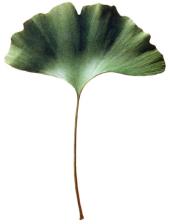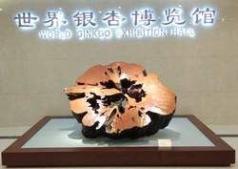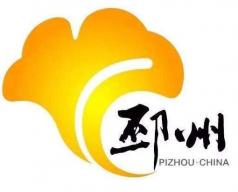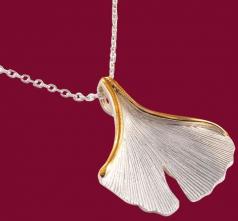A tree and its names
Ginkgo Museum
A tree and its names
Over the ages the Ginkgo tree has been given various names.
They all give evidence of how much this tree has inspired the fantasy of its observers:
Duck foot tree, white nut tree, silver apricot, temple tree, Maidenhair-fern tree, Salisburie, grandfather-grandchild tree, forty Taler tree, Japanese nut tree, Golden Tree, Goethe tree, Golden Tree just to name a few.
As far back as the 11th century, the tree was mentioned in Chinese poetry and in the 16th century in Chinese herb literature under the denomination >ya chio< ( duck foot ) or >yin hsing< ( silver apricot ). The latter refers to the silver-colored (white) cores with the orange colored shell.
As >ginkyo<, >ginnan< and >itcho< ( Duck foot tree) it was included in the Japanese vocabulary.
The fact that it is nowadays mostly known as "Ginkgo" is the result of a transcription error which managed to creep in the print of the botanist Engelbert Kämpfer"s (1651 - 1716) study of the tree around 1712. The >y< in >Ginkyo< turned into a >g< when he was translating the Japanese name into Latin. His denomination was adopted by Carl von Linné( 1771 ) and is binding for the botanical name collections. Linné extended the name by adding the addendum >biloba<, which defines the bilobed leaf shape.
Ginkgo Museum
- Translation by Susanne Wilm, 2003
- Update by Zenaida des Aubris, 2009






